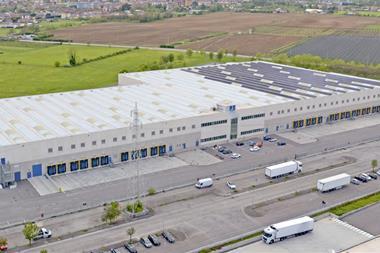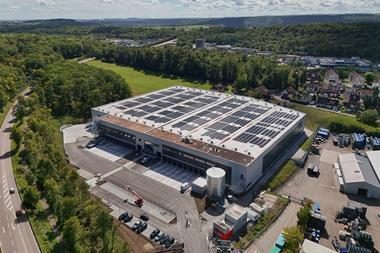Real estate investors need not panic, but rising rates does have important implications, writes Alex Knapp

The Bank of England has raised interest rates to 0.75% in an attempt to curb inflation. Across the Atlantic, the Federal Reserve recently announced its first interest rate rise since 2018. Pressure is mounting on the European Central Bank (ECB) to take similar measures.
Rate rises reflect universal unease about the current pace of inflation, which has been accelerated by the pandemic, the resulting supply-chain crises and the war in Ukraine.
There is no escaping it – inflation in Europe looks set to keep rising for at least the rest of this year. Supply chains will remain under pressure, trade will continue to be somewhat depressed and global economic growth more muted. These factors will ensure heightened construction and utility costs persist. Indeed, the inflatioin headlines are almost certain to get worse before they get better.
For these reasons, the real estate market is understandably nervous about the current macroeconomic environment. Inflation is the key area of concern for our investor base, with geopolitics now coming up second. However, while the sector must remain absolutely alive to the risks of high inflation as a traditional precursor to recession, it need not panic. Rising inflation does not always equate to widespread disruption for real estate, and its impacts will not be felt uniformly.
Changing interest rates, especially for the US Federal Reserve, are not unusual and are not in themselves a cause for undue concern. Since 1990, the Fed has altered rates more often than not, either raising or cutting rates at 52% of meetings.
Interest rate hikes have historically been accompanied by strong price and rental growth across sectors. Hines’ research looking at the implication of inflation for the US real estate sector reveals a similar trend for yields. Annual price growth has averaged 5.8% during periods when the Fed is raising rates, versus just 1.1% when the Fed is cutting and 2.8% in steady rate environments. This is even more pronounced in Europe, where price growth has averaged more than 10% per year during periods when the ECB is raising rates and just 1.8% when it is easing monetary policy.
There are, however, obvious differences in today’s situation to historic precedent, as it relates to Europe. Current inflation is driven more by rising supply costs and post-COVID reopening than by inherently strong economic fundamentals. The rental uplifts that would be expected if inflation was driven by strong economic growth will be more muted. The spectre of ‘stagflation’ is not our base case, but it remains an outside risk. Instead, the more likely scenario is a modest slowdown accompanied by a renewed focus on asset quality. Logistics is perhaps the only sector where exuberance will prevail over the short-term headlines.
As with every crisis, the most modern, sustainable and well-located assets will be able to weather the turbulence and still generate healthy returns. We are seeing clear evidence of this in prime office and green shoots in prime high-street retail. With the lending markets becoming both more expensive and more cautious, secondary assets in secondary locations will suffer disproportionately. The same is true for capex-intensive projects with more borderline demand stories. The most sustainable properties will experience higher demand, and the polarisation between ‘green’ and ‘brown’ assets will be accelerated materially. These are the assets which can command better rents and absorb higher costs. All investors will need to invest today in energy transition plans or risk disproportionate value erosion over time. Just as COVID-19 accelerated e-commerce, Ukraine will accelerate the greening of portfolios.
Since 2008, Europe has experienced four other notable economic shocks: the global financial crisis, the Greek sovereign debt crisis, Brexit and the pandemic. Each one has brought disruption and economic hardship to people’s lives. However, each time, Europe and its inhabitants have bounced back, absorbing the shocks and then driving new waves of growth. Our role as investors is to protect against the current turbulence while remaining ready to lean into market dislocations that might eventually present themselves. The news will get worse before it gets better but the pain will not be equally distributed.


















